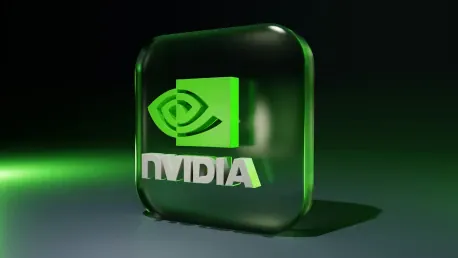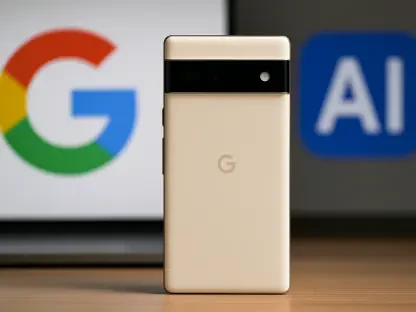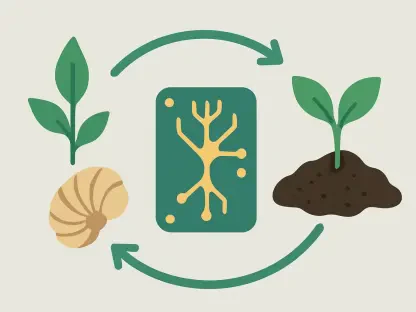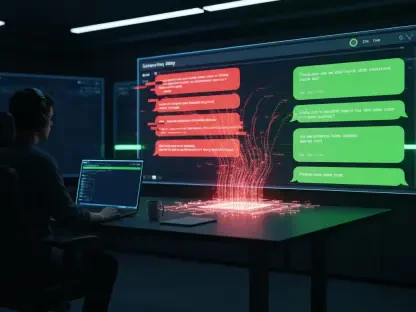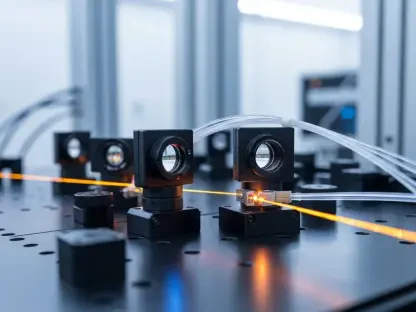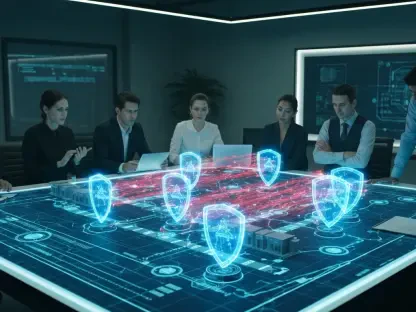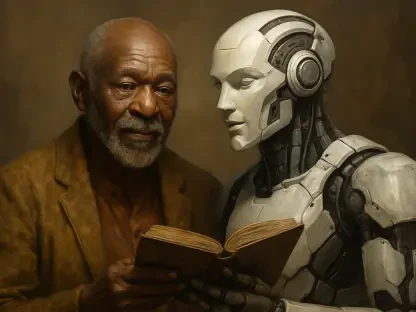In a recent visionary take, Nvidia’s CEO Jensen Huang has outlined an optimistic view that combines the realms of artificial general intelligence (AGI) and a concept he calls “Artificial General Robotics.” His insights offer a glimpse into a future where AI is integrated into various aspects of everyday life, effectively transforming industries from manufacturing to household automation. Huang’s commitment to this dual progression of AI and robotics is grounded in his belief that we are on the cusp of groundbreaking advancements that could redefine technological interactions in the near future.
The Importance of Tokenizing
Making Complex Data Manageable
Huang underscores the critical importance of tokenizing, a technique where complex data and actions are broken down into simpler, more manageable units. Tokenization stands as a cornerstone for integrating AI with large language models (LLMs) and other data modalities, especially sensory ones. Huang believes this will enable robots to perform seemingly simple yet inherently complex tasks, such as picking up objects. These tasks demand a nuanced understanding of physics, spatial awareness, and human intent—elements that complicate what may look like straightforward actions on the surface. The ability for AI to grasp these subtleties could revolutionize its everyday applications.
Integrating advanced tokenization processes into AI systems means that robots will become more adept at interacting with their environments in meaningful ways. For instance, a robot would not just recognize objects but understand their properties, weight distribution, and how best to grasp them. This capability goes beyond mere recognition and delves into the execution of complex actions. With tokenization making data more digestible, AI systems can leverage these insights to perform tasks with precision and finesse, gradually easing into real-world settings where they might once have struggled.
Bridging Virtual Simulations and Physical Interactions
The tech community is abuzz with excitement over the prospect of AI performing real-world tasks rather than merely simulating them in controlled, virtual environments. Huang paints a vivid analogy by comparing the virtual act of reaching for a coffee cup in a video game with prompting a robot to perform the same task in reality. This comparison highlights that the underlying problems AI faces in both digital and physical realms are essentially similar. If tokenization and other sophisticated processing techniques can bridge this gap, AI might soon interact with the physical world as smoothly as it navigates virtual landscapes.
The implications of this are far-reaching. Robots programmed or prompted to perform various tasks using tokens could transform numerous industries. For example, in healthcare, robots could handle routine tasks, freeing human workers to focus on more complex responsibilities. In manufacturing, they could adapt quickly to new processes or materials with minimal reprogramming. The convergence of AI and robotics facilitated by tokenization might lead to a future where machines learn autonomously through their interactions with the environment or subtle prompts from users.
Nvidia’s Technological Edge
Leveraging GPU Technology and CUDA
Huang’s vision aligns seamlessly with the advancements Nvidia has spearheaded in GPU technology and software frameworks, notably CUDA. CUDA has been instrumental in propelling recent AI developments, particularly in deep learning applications. With Nvidia’s robust hardware and software ecosystems, the company is uniquely positioned to drive the next wave of innovation in AGI and robotics. Huang’s insights suggest that leveraging these technologies could yield significant advancements in processing power and efficiency, critical for implementing sophisticated AI models in real-world applications.
Nvidia’s investment in GPU and CUDA technology serves as a backbone for the intense computational demands of tokenizing and processing complex data. As these technologies evolve, they provide fertile ground for developing more advanced robotic systems capable of real-time decision-making and autonomous learning. This capability could fundamentally alter how industries operate, making AI not just an auxiliary tool but a core component of the workflow. The synergy between Nvidia’s hardware capabilities and the evolving software requirements of AGI and robotics marks a pivotal step toward realizing Huang’s ambitious vision.
Exceeding Moore’s Law Expectations
The rapid pace of AI development, which potentially surpasses the expectations set by Moore’s Law, hints at an era where the boundaries between digital simulation and physical execution blur. Huang’s optimism revolves around the notion that tokenizing and processing complex data can achieve levels of efficiency previously thought unattainable. This dynamic progression might usher in an age where AI and robotics not only coexist but function in tandem to enhance and streamline processes across various domains.
As we advance into this new era, the distinction between AI simulations in virtual environments and their physical counterparts could become increasingly ambiguous. The power to tokenize and interpret intricate data sets in real-time might enable AI systems to perform tasks traditionally reserved for humans, bridging yet another gap in technological capability. This convergence of AGI and robotics could set the stage for innovations that reimagine the roles of AI in sectors ranging from customer service to surgical procedures, bringing Huang’s vision closer to realization.
Future Implications of AGI and Robotics Convergence
Transforming Everyday Life and Industry
In summation, Jensen Huang’s forward-thinking vision proposes a future where AI transcends its current virtual confines to make significant strides in the physical world. By focusing on the essential yet complex process of tokenizing data, AI systems could align their computational capabilities with the tangible world around us. This alignment has the potential to unlock unprecedented levels of intelligence and autonomy in robotics, transforming everyday life and various industrial processes.
The challenge, then, lies in effectively translating complex physical actions into manageable data tokens that AI can process and act upon. If successful, this could lead to machines capable of learning and executing tasks with minimal human intervention, revolutionizing sectors like logistics, healthcare, and domestic services. Huang’s vision isn’t merely about what AI can do today but what it will be able to achieve tomorrow, setting the stage for a new era of smart, responsive, and highly capable robotics.
A Call to Action for the Tech Community
Recently, Nvidia’s CEO Jensen Huang presented an optimistic vision that merges the realms of artificial general intelligence (AGI) with a concept he calls “Artificial General Robotics.” This idea provides a glimpse into a future where AI becomes deeply integrated into various facets of daily life, revolutionizing industries ranging from manufacturing to household automation.
Huang’s strong commitment to advancing both AI and robotics reflects his belief that we stand on the brink of significant breakthroughs that will reshape how we interact with technology. He envisions a world where smart machines not only process information like humans but also perform physical tasks, leading to more efficient, intelligent systems that enhance our productivity and quality of life.
This dual progression could lead to the creation of highly adaptable robots that learn and evolve, transforming workplaces and homes alike. Huang’s insights suggest that, in the near future, we could witness unprecedented innovations, redefining how we function in various settings and enabling new levels of interaction between humans and machines.
